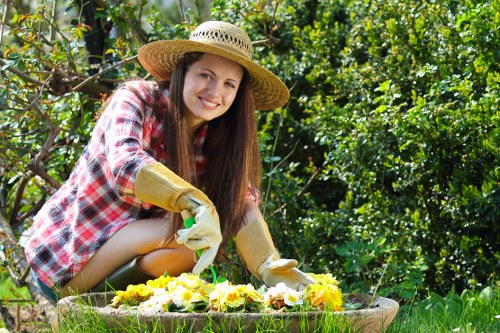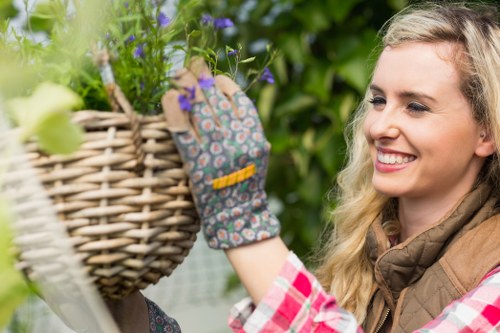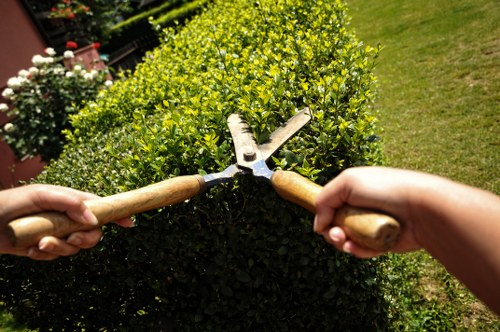Gardeners Central London

Central London is a bustling hub of culture, history, and greenery. For gardeners, this area offers a unique blend of urban charm and natural beauty. Whether you have a spacious garden or a small balcony, gardening in Central London can be a rewarding experience.
The diverse climate and soil conditions in Central London provide a perfect environment for a wide variety of plants. From vibrant flowers to lush vegetables, gardeners have plenty of options to choose from.
In this article, we will explore the best practices, tips, and local insights for gardeners in Central London. Whether you're a beginner or an experienced gardener, you'll find valuable information to help you create and maintain a beautiful garden.
Understanding Central London’s Climate

Central London enjoys a temperate maritime climate, characterized by mild winters and cool summers. The average temperatures range from 2°C in January to 22°C in July. This climate is generally favorable for a wide variety of plants, but gardeners should be prepared for occasional cold snaps and periods of heavy rainfall.
To make the most of Central London’s climate, it’s important to select plants that are well-suited to these conditions. Hardy perennials, shade-tolerant plants, and drought-resistant species are excellent choices for urban gardens.
Additionally, understanding the microclimates within Central London can help you optimize your garden’s layout. Areas near buildings may experience different temperature fluctuations and sunlight exposure compared to more open spaces.
Choosing the Right Plants

Selecting the right plants is crucial for a successful garden in Central London. Consider the following factors when choosing plants:
- Sunlight: Assess the amount of sunlight your garden receives daily. Some plants thrive in full sun, while others prefer shade.
- Soil Type: Central London’s soil can vary, so it’s important to test your soil and amend it as necessary with compost or other organic matter.
- Watering Needs: Choose plants that match your watering schedule and the natural rainfall of the area.
- Space: Ensure that the plants you select will have enough space to grow without overcrowding.
Popular plants for Central London gardens include:
- Roses – Beautiful and fragrant, ideal for sunny spots.
- Hostas – Perfect for shaded areas with lush foliage.
- Lavender – Drought-resistant and great for adding color and scent.
- Tomatoes – Excellent for vegetable gardens and balcony pots.
- Herbs – Such as basil, mint, and rosemary, which are easy to grow and useful in the kitchen.
Garden Design and Layout

Designing your garden thoughtfully can enhance its beauty and functionality. Here are some tips for creating an appealing garden layout:
- Plan Your Space: Measure your garden area and sketch a layout to determine where each plant will go.
- Create Focal Points: Use features like a fountain, sculpture, or a group of flowering plants to draw the eye.
- Incorporate Pathways: Pathways made of gravel, bricks, or stepping stones can add structure and make your garden more accessible.
- Use Vertical Space: Utilize trellises, balconies, and walls for climbing plants to maximize space.
- Consider Seating Areas: Adding benches or a small seating area allows you to enjoy your garden.
Balancing aesthetics with practicality will ensure that your garden is not only beautiful but also easy to maintain.
Maintenance Tips for Urban Gardens

Maintaining a garden in Central London requires regular care and attention. Here are some essential maintenance tips:
- Watering: Water your plants early in the morning to reduce evaporation and fungal growth. Use a watering schedule that matches the needs of your plants.
- Weeding: Keep your garden free of weeds, which can compete with your plants for nutrients and water.
- Pruning: Regularly trim your plants to promote healthy growth and prevent overcrowding.
- Fertilizing: Use organic fertilizers to provide essential nutrients to your plants.
- Pest Control: Monitor your garden for pests and use natural remedies to keep them at bay.
Consistent maintenance will help your garden thrive and remain a beautiful retreat amidst the urban landscape.
Local Resources for Gardeners

Central London offers a wealth of resources for gardeners, including nurseries, gardening clubs, and community gardens. Here are some valuable resources to explore:
- Local Nurseries: Visit nearby nurseries to find a wide selection of plants, tools, and gardening supplies.
- Gardening Clubs: Join local gardening clubs to connect with other gardeners, share tips, and participate in community projects.
- Community Gardens: Engage with community gardens to gain hands-on experience and contribute to shared green spaces.
- Workshops and Classes: Attend gardening workshops and classes to learn new techniques and improve your skills.
- Online Forums: Participate in online gardening forums and social media groups for additional support and inspiration.
Utilizing these resources can enhance your gardening experience and help you create a thriving garden in Central London.
Nearby Areas for Garden Enthusiasts
Central London is surrounded by numerous areas that offer unique opportunities for gardeners. Here are some of the closest areas worth exploring:
- Westminster: Known for its historic gardens and landmarks, Westminster offers beautiful green spaces like St. James’s Park.
- Kensington: Home to the Royal Botanic Gardens and numerous well-maintained residential gardens.
- Chelsea: Features charming cottages with lush gardens and access to the famous Chelsea Physic Garden.
- Islington: Offers community gardens and rooftop gardening opportunities.
- Camden: Known for its vibrant markets and creative garden spaces.
- Greenwich: Boasts expansive parks and the historic Greenwich Park.
- Barnes: Features picturesque riverside gardens and a tranquil environment.
- Fulham: Offers local nurseries and beautiful residential gardens.
- Hampstead: Known for its large Hampstead Heath and elegant garden estates.
- Notting Hill: Features colorful gardens and the famous Notting Hill Carnival greenery.
- Soho: Offers compact gardens and innovative urban gardening solutions.
- Shoreditch: Known for its trendy rooftop gardens and community green projects.
- Marylebone: Features traditional British gardens and local plant shops.
- Paddington: Offers access to Paddington Basin’s green spaces and gardening resources.
Conclusion
Gardening in Central London is a fulfilling endeavor that combines the beauty of nature with the vibrancy of urban life. By understanding the local climate, choosing the right plants, and utilizing available resources, you can create a thriving garden space.
Whether you’re tending to a rooftop garden or nurturing plants in a spacious backyard, the key to successful gardening lies in careful planning, consistent maintenance, and a passion for cultivating beauty.
Embrace the unique opportunities that Central London offers, and enjoy the rewards of a lush, green sanctuary in the heart of the city.
Frequently Asked Questions
1. What are the best plants for small gardens in Central London?
For small gardens, consider compact and versatile plants such as succulents, herbs like basil and thyme, dwarf varieties of vegetables like cherry tomatoes, and flowering plants like petunias and marigolds.
2. How can I protect my plants from cold weather in Central London?
Use mulch to insulate the soil, cover plants with frost cloths during cold snaps, and choose hardy plant varieties that can withstand lower temperatures.
3. Where can I buy gardening supplies in Central London?
You can purchase gardening supplies from local nurseries, garden centers, and online stores. Areas like Kensington and Fulham have several reputable nurseries.
4. Are there community gardening groups in Central London?
Yes, Central London has numerous community gardening groups and clubs where you can connect with other gardeners, share tips, and participate in collective gardening projects.
5. How often should I water my garden in Central London?
Watering frequency depends on the plant types and weather conditions. Generally, gardens should be watered early in the morning, with adjustments made based on rainfall and seasonal changes.